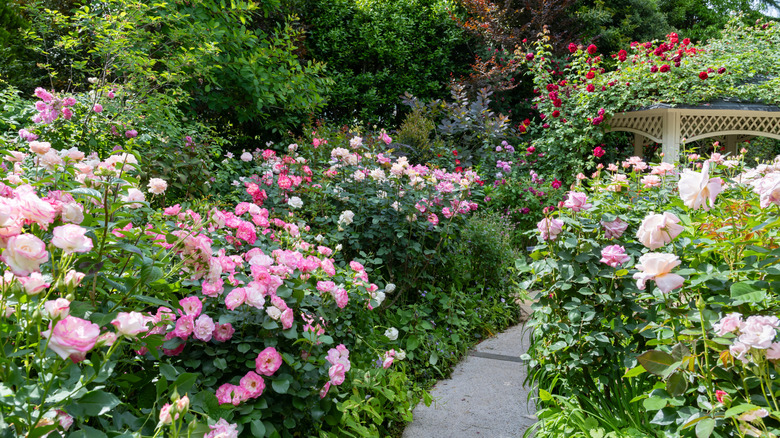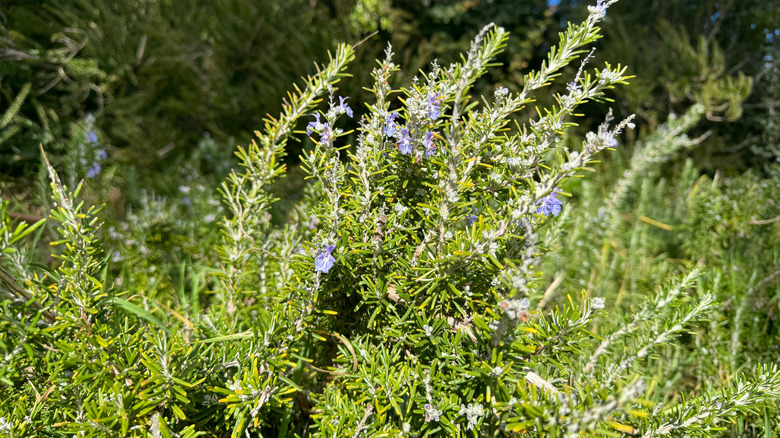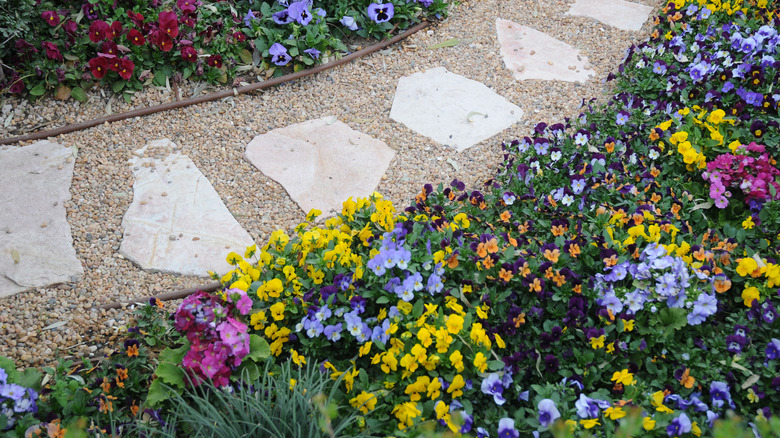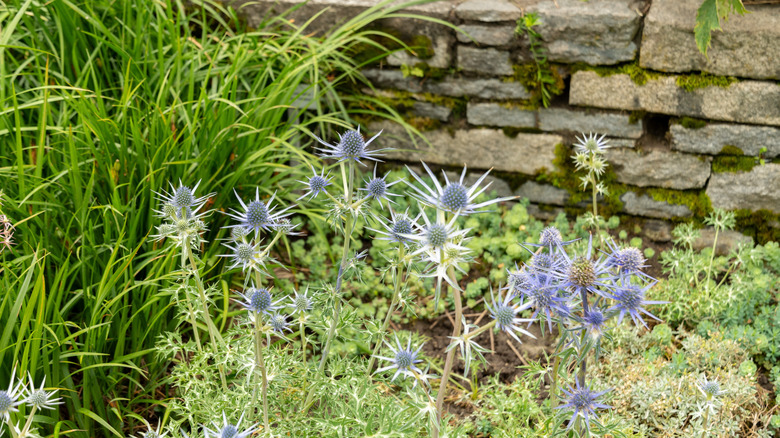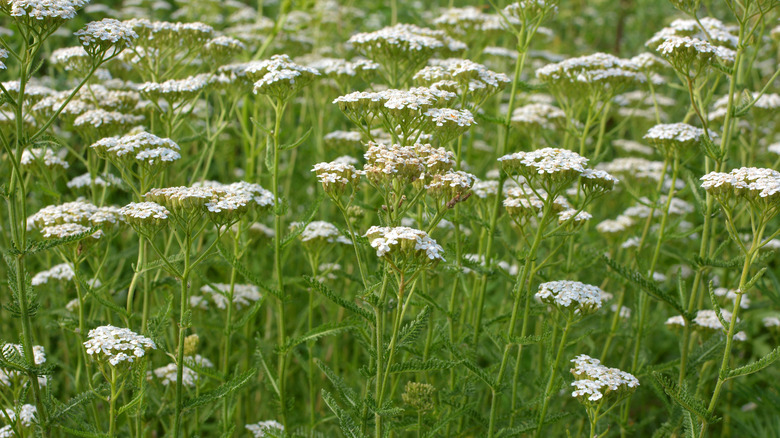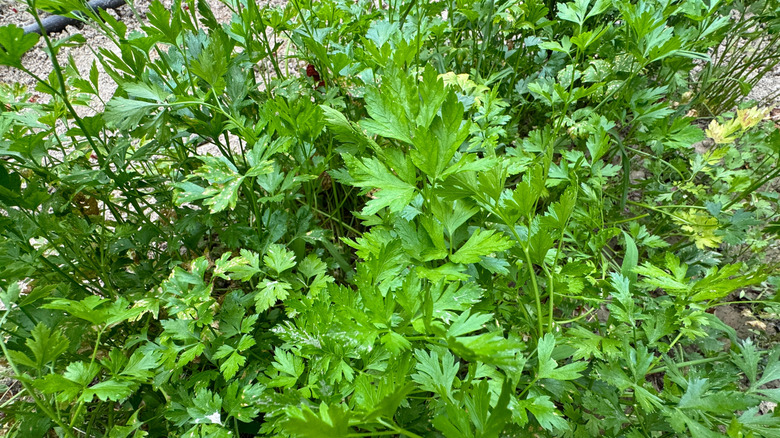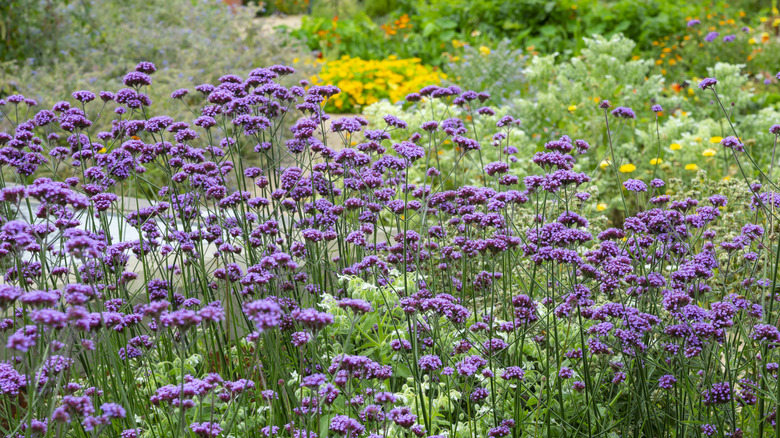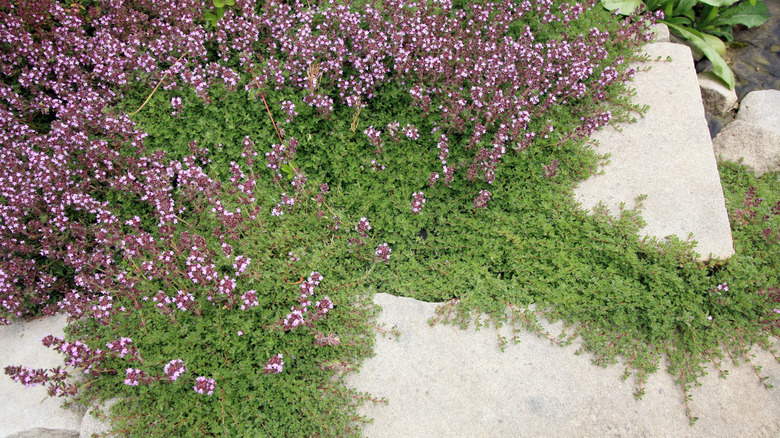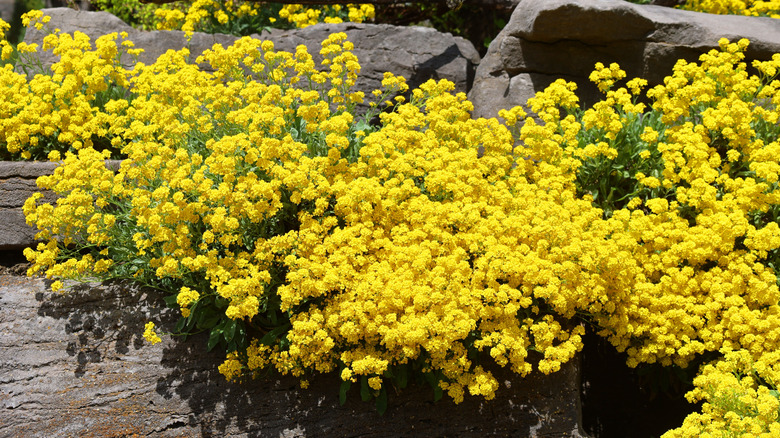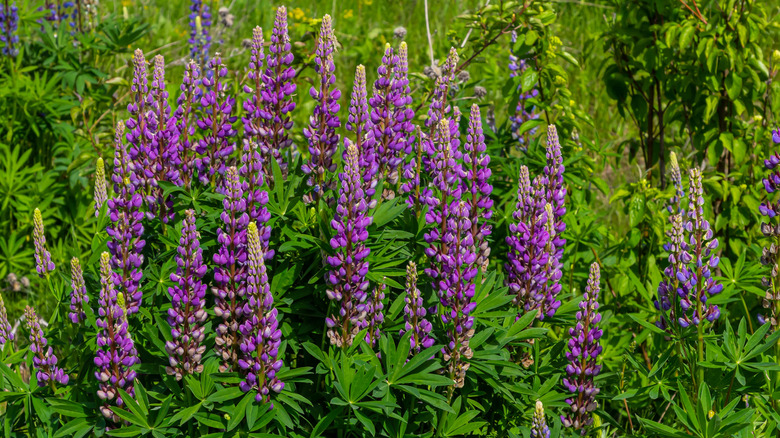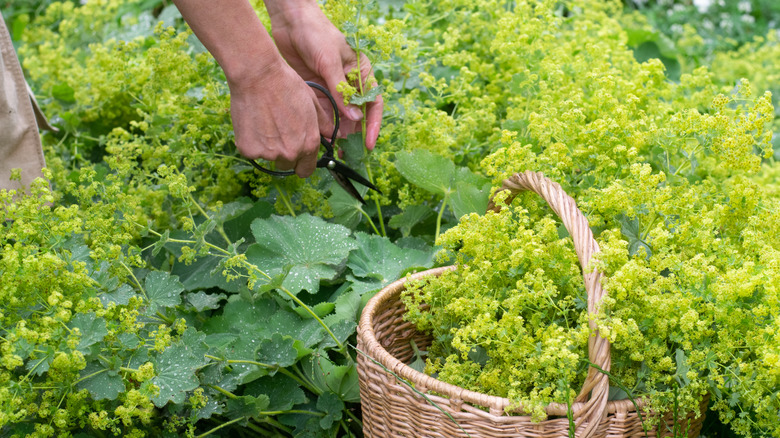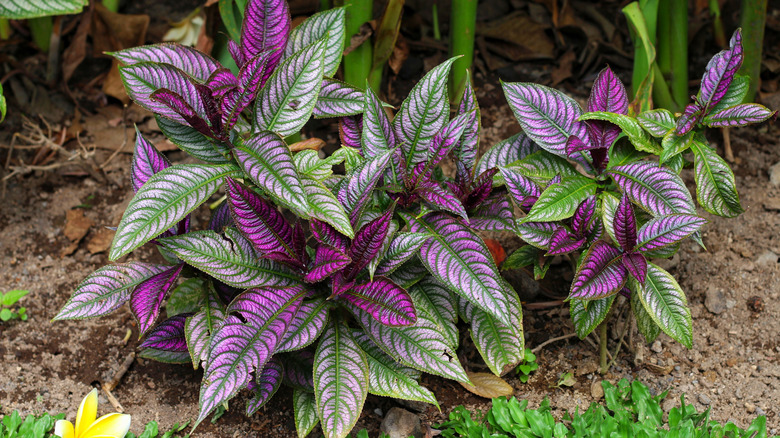The 11 Best Ground Covers To Plant Alongside Roses For A Beautiful Garden Display
Underplanting is a practice of placing groundcover flora underneath larger plants to enhance either the beauty or health (or both!) of that statement garden piece, which in this case are your roses. It creates a beautiful, pollinator-friendly garden that looks full and vibrant from root to shoot. There are a number of companion plants to complement your roses for a showstopping garden of color, but these ground cover ideas do so much more than provide visual appeal. They also help your roses thrive in an environment of mutually beneficial harmony while providing distinct visual levels of plantings.
In general, groundcover plants are a natural canopy against unwanted growth, starving weeds of light and preventing germination of weed seeds. With some of these options for your roses, you'll spend less time getting rid of weeds in your garden and more time enjoying the space. On another practical level, ground cover plants can camouflage unseemly tools and materials that you're using to maintain your beautiful blooms, like irrigation lines. Some varieties enhance and complement your roses' colors, while others provide additional health benefits to your rose bushes. Whatever your preference, there's a ground cover plant out there that will suit your roses and your overall garden-scape.
Creeping Rosemary
Creeping rosemary, also referred to as trailing rosemary (Rosmarinus officinalis prostratus), is a variety of this aromatic herb that usually won't get taller than 2 feet in height but can grow across 5 feet of ground cover. A Mediterranean plant that thrives in hardiness zones 8 to 11, rosemary pairs well with roses since they both enjoy similar environmental situations. Rosemary's cascading, trailing effect will complement, rather than compete with, your roses' visual drama, and as an added bonus, rosemary is also a natural repellent against insects and mites.
Pansy
Pansies (Viola x wittrockiana) are hybrid, biennial plants engineered to provide compact ground cover in gardens. These blooms can grow to a height of 6 to 12 inches, with a spread of one foot. They are hardy in zones 6 to 10, and bloom in the spring, fall, and in some cases, winter. Their blooming cycles work well with roses since they trade off in providing sprays of color, with most rose varieties blossoming in late spring to early summer. If you're hoping to have flowers year round, then planting pansies is a way to fill out your blooms calendar.
Sea Holly
If you ever wondered what it would look like if a thistle grew in the Little Mermaid's castle, then a sea holly (Eryngium) is a fun choice that will add a bit of whimsy to your elegant roses. A choice best for zones 2 to 10, sea holly's blue-purple blossoms grow in stiff, taller, clumps that measure from 1 to 3 feet tall and 2 feet across. They are striking when they bloom in the summer into the fall. Sea holly is a great pollinator, attracting bees and butterflies, all critters that enhance the health of roses — and your garden, overall.
Yarrow
Yarrow (Achillea spp.) is a low maintenance companion when utilized as underplanting for the more time and skill-consuming roses in your yard. A native North American plant that thrives in hardiness zones 3 to 9 and has similar measurements to sea holly, yarrow is a summertime bloomer that also attracts pollinators to your garden. Because of its rather demure blossoms, it won't clash with any number of rose colors, either, which offers the perfect visual complement to your more statement plants. Yarrow enjoys full sun and is quite a hardy perennial that resists pests and tolerates droughts well.
Parsley
Other than being a tasty herb to dress up a dinner, parsley (Petroselinum crispum) has a number of properties that mutually benefit the plants around it, including roses. It's a great natural pest repellent against aphids, flies, and most importantly for roses, rose beetles. Rose beetles, also known as Japanese beetles, are an invasive insect species that have a nasty reputation for chewing away at rose petals, leaves, and a host of other plants commonly found in yards. Despite its small 8 to 14-inch height, parsley helps keep these beetles at bay, warding them off from your roses.
Verbena
Verbena (Verbena bonariensis), depending on the variety, is a late season perennial or annual that blossoms with petite bouquets of brightly colored flowers. Since they bloom as late into the year as the first frost, they provide some aesthetic charm to your garden even beyond the blooms of roses. Overall, verbena is hardy in zones 7 through 11 and come in a number of colors. Note, though, this option can be quite aggressive when growing, even exceeding 3 feet at times and named as invasive in the western and southeastern United States.
Red Creeping Thyme
Red creeping thyme (Thymus praecox) is a beautiful ground cover companion to plant with roses and has many similar properties as fellow ground cover option creeping rosemary. But its advantage over its cousin is the expanded hardiness zones 2 through 9 (though beware that it is labeled as invasive in certain counties in Virginia). As a perennial, it creates a vibrant, and pretty solid, mat of groundcover throughout the year, and only reaches about 4 inches in height. Creeping thyme is another fantastic pollinator and can even repel larger pests that make their way into our gardens, like deer and rabbits.
Basket-of-Gold
Basket-of-gold (Aurinia saxatilis) is both an evergreen and a perennial with vibrant golden flower clusters that pop up in the mid to late springtime. Best in zones 3 to 7, this groundcover is mat-forming like creeping thyme, and can therefore help ward off weed growth. Growing only 6 to 12 inches in height and up to 1.5 feet across, it provides year-round greenish-gray fill, aside from its springtime display of color. Visually, its normally neutral color palette lets your roses stand out, and when it flowers, it's a beautiful opening act for your roses too!
Lupine
Lupine (Lupinus perennis) is a tall member (up to three feet) of the extended bean family, therefore, it's a nitrogen fixer that boosts the nutrients in poor soil. If you're attempting to grow roses in rougher grounds in hardiness zones 3 to 10, underplanting with lupine may help your roses grow in fuller and larger. Nitrogen is essential for healthy leaf growth on a rose bush, but bear in mind that too much nitrogen can compromise your roses too. Be sure to balance your soil composition with the correct fertilizer that'll provide the right mix of nutrients, like phosphorus and potassium.
Lady's Mantle
Lady's Mantle (Alchemilla mollis) produces petite yellow to green-colored bloom clusters and rippled, circular leaves that provide overlapping ground cover. While a common medicinal plant in history, today, Lady's Mantle is an optimal underplanting option for roses as it boosts soil moisture levels and helps regulate soil temperature. Its delicate flowers don't vie against your rose blossoms for attention, and in fact their optimal bloom windows succeed one another, rather than compete. Lady's Mantle is hardy in zones 3 to 8, and blooms in late spring to early summer, but is considered invasive is some areas of the Pacific Northwest.
Persian Shield
Persian shields (Strobilanthes dyerianus) is a groundcover plant with a deep root system that helps maintain the integrity of the soil it's planted in. This is particularly helpful in the Mediterranean and semi-tropical hardiness zones of 10 and 11, where the plant thrives and can grow up to 4 feet tall and 3 feet across. Aesthetically, Persian shields exhibit a bright purple color, and its large leaves — which can grow up to seven inches long — can cover significant surface area if you want a robust ground cover that'll keep irrigation lines out of sight.
